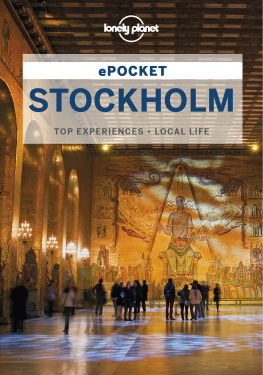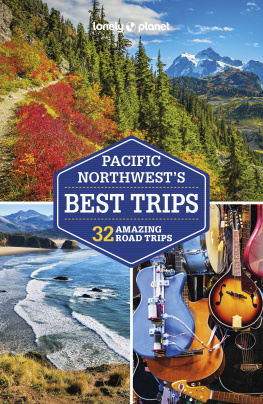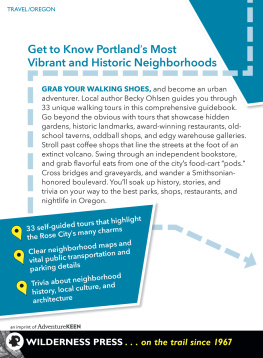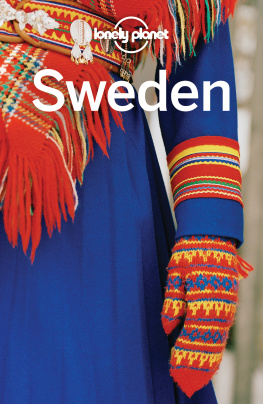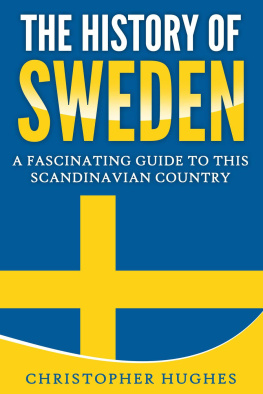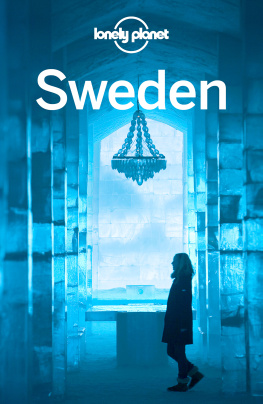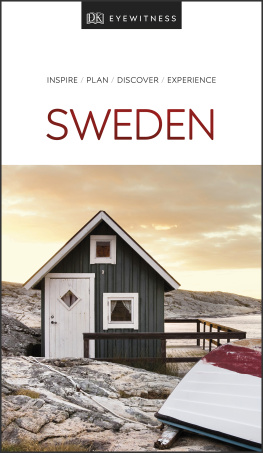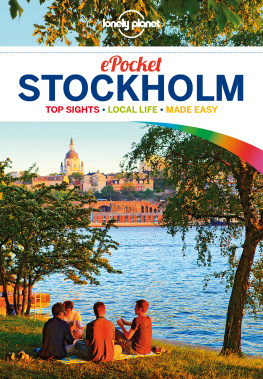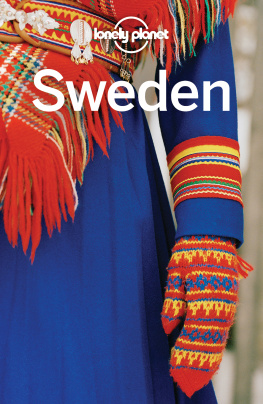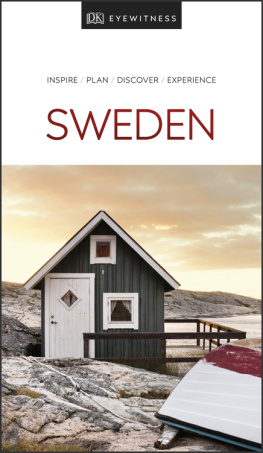Destination Sweden
Theres something almost otherworldly about Sweden and we mean that in the most flattering way possible. Its just a bit skewed, a bit removed from the norm, and one gets the sense that Sweden likes being that way. For travellers, too, its a delight to visit somewhere that, while it may not look terribly outlandish, still feels distinctly and wonderfully foreign.
FAST FACTS
Population: 9.1 million
GDP (2007 estimate):
US$300.2 billion; per
capita US$41,100
Inflation: 0.9%
Unemployment: 2.5%
Labour force (2008 estimate): 4.4 million
Literacy rate: 99%
This sense of strangeness is partly a result of Swedens out-there position on the map. But theres more at work than geographical isolation. Swedens literature and cinema favour a weighty, Gothic sense of drama blended with gallows humor and stark aesthetics all of which, in some form, at some point, will confront the visitor. For instance, its hard not to see something faintly hilarious, yet also quite lonely and sad, in the image of a single reindeer wandering crookedly along an all-but-abandoned Lappland highway in the murk of a winter afternoon. Theres also something poignant about a capital city thats so far from the middle of anything, yet is so determined to be the centre of everything. Regardless of how it presents itself, the visitor will notice a particular tone in Sweden that hints at many things: depth of feeling, awareness of doom, absence of sentimentality, strength of principle, avoidance of conflict, a somber conviction that certain things simply matter. Of course, such intangibles wont likely make it into your post-trip slide show, but nevertheless the mysterious Swedish sensibility enhances every aspect of a travellers experience.
Its an exciting time to visit Sweden, too the small country with its long history of consistent moderation just happens to be in the middle of a whirlwind of change. Swedish music, fashion, film, art and food couldnt be more vibrant, and its even shaking things up in the often rather stolid world of politics. Dont miss the chance to get in while its hot.
Getting Started
Travel in Sweden is extremely easy, and a bit of advance planning can help smooth over any rough patches. Historically an expensive place to travel, its now more or less in line with the UK in terms of cost. Still, booking ahead for accommodation and transport within the country will help save money, and look into discount travel cards for the major cities before you leave (). Once you arrive, you will find the cities easy to get around and well serviced by public transport, with almost everywhere wheelchair-accessible.
WHEN TO GO
Despite its north European location, Sweden isnt as cold as you might expect. The south has a year-round temperate climate and summer can be quite warm in the north. Sweden is at its best during summer and autumn (late May to September), but hikers and campers may wish to avoid the peak of the mosquito season (June and July). Due to the countrys high latitude, daylight hours are long in summer. Malm gets 17 hours of daylight at midsummer, and Sundsvall has constant light during the second half of June, but you have to travel north of the Arctic Circle to experience the true midnight sun: in Kiruna, the sun remains above the horizon for 45 days (31 May to 14 July).
See for more information.
Swedes are big on holidays, and even Stockholm shuts down for two or three days around Christmas and Midsummer, so plan accordingly. Most Swedes take their holidays from late June to mid-August, so hostels are crowded, but this is also when most hotels offer discounts of up to 50%. Loners and misanthropes should travel between seasons, in May or early June, when everything is closed and no ones about.
Travel in winter is somewhat restricted and requires some planning as well as serious winter clothing, but there are good opportunities for activities like skiing, dogsledding and snowmobiling. The big cities are in full swing all year, but the smaller towns almost go into hibernation when the temperatures begin to drop. The notable exceptions are the popular ski resort towns like re and Jukkasjrvi (home to the Ice Hotel).
HOW MUCH?
0.7L bottle of Swedish brnnvin (vodka) Skr225
Coffee and saffron pancake Skr45
Souvenir Dalahst (wooden horse) Skr70-3000
Cinema ticket Skr90
Nightclub admission Skr150
COSTS & MONEY
Sweden has a very good standard of living, which means the travel experience is generally high quality but doesnt come cheap. Careful planning can help reduce costs.
During the low-price summer period (June to August), if you stay in a midrange hotel (which usually includes a huge buffet breakfast), eat a daily special for lunch and have an evening meal at a moderately priced restaurant, you can expect to spend Skr1000 per person per day if youre doubling up, and Skr1500 if youre travelling alone. Staying in hostels, making your own breakfast, eating the daily special for lunch, and picking up supermarket items for dinner will probably cost you Skr450 per day. The cheapest way to visit Sweden is to camp in the woods for free, eat supermarket food, hitchhike or cycle to get around, and visit only the attractions that have free admission this will cost less than Skr200 per day, depending on your supermarket choices. If you stay in commercial camping grounds and prepare your own meals you can squeak by on around Skr300 per person per day. If there are a few of you, sharing car rental for a weekend in order to see some out-of-the-way places is worth considering (some petrol stations offer small cars for as little as Skr300 per day). Self-service pumps that take banknotes or credit cards are slightly cheaper, though many wont accept foreign credit cards without a PIN code.
DONT LEAVE HOME WITHOUT
- Your ID, passport and visa (if applicable)
- Industrial-strength mosquito repellent in summer
- Good walking shoes
- Layers of warm clothing, just in case
- A swimsuit again, just in case
- Sunglasses when the sun does shine, its bright
- A map of Stockholms tunnelbana (metro)
- A taste for pickled fish
- A fast-acting liver for snaps (Swedish liquor)
TRAVELLING RESPONSIBLY
Sweden makes it easy to be a responsible traveller: recycling, for example, is practically effortless, as bins and sorting instructions are everywhere, from inside hotel rooms to near highway rest stops. Theres a high level of general environmental consciousness in the country. Two organisations that set standards for labelling products as ecologically sound are the food-focused KRAV (www.krav.se), a member of the International Federation of Organic Agriculture Movements, and Swan (www.svanen.nu), which has a wider scope and certifies entire hotels and hostels.
Aside from environmental concerns, one of Swedens biggest challenges is protecting the cultural heritage of the Sami people. The two issues are closely linked: the harnessing of rivers for hydroelectric power can have massive (negative) impact on what has historically been Sami territory, whether by flooding reindeer feeding grounds or by diverting water and drying up river valleys.
In general, the mining, forestry and space industries have wreaked havoc on Sami homelands. Travellers interested in learning more and experiencing Sami culture are encouraged to look for the Naturens Bst logo, which indicates that an excursion or organisation has been approved by



